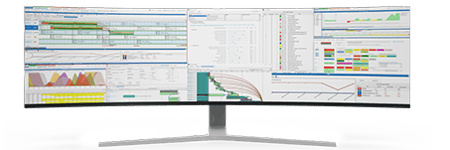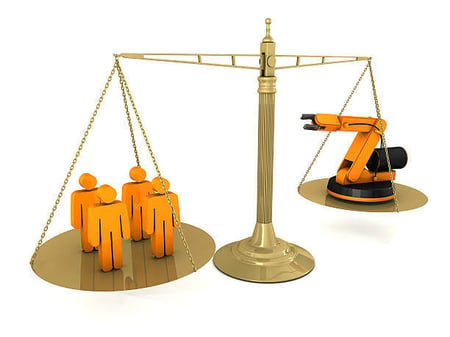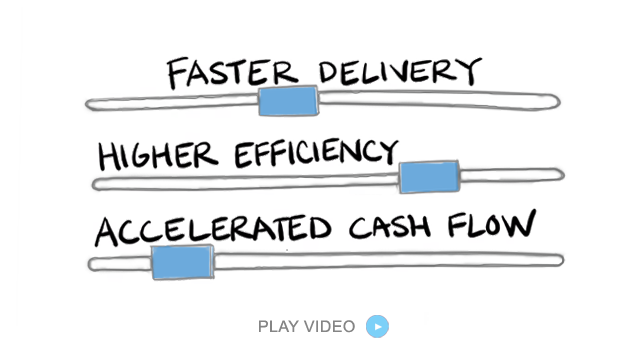Balancing Technology and Workforce Needs: A Strategic Imperative for Industrial Manufacturing
In the age of Industry 5.0, the industrial manufacturing sector is undergoing a dramatic transformation. Smart factories, advanced planning systems, AI-driven analytics, and automated machinery are becoming the norm. While these technological advancements offer significant gains in productivity, quality, and cost reduction, they also bring to light a critical challenge: balancing the integration of cutting-edge technologies with the evolving needs of the workforce.
For Operations Directors, this dual priority—leveraging new technologies while nurturing and aligning the human element—has become a strategic imperative. Getting it right is no longer optional. It's the key to long-term sustainability, workforce retention, and operational excellence.

The Push for Technology in Manufacturing
The momentum to digitize and automate manufacturing operations continues to build, driven by fierce global competition, volatile supply chains, and customer demands for rapid customization. At the center of this digital evolution is the push for more agile and synchronized production scheduling—where Advanced Planning and Scheduling (APS) solutions like PlanetTogether play a pivotal role.
PlanetTogether enables real-time, constraint-based production planning, helping manufacturers optimize schedules across multiple machines, shifts, and production lines. When integrated with enterprise systems such as SAP, Oracle, Microsoft Dynamics, Kinaxis, or Aveva, this synchronization transforms planning from a static, spreadsheet-driven activity into a dynamic, data-rich decision-making engine.
The benefits? Increased throughput, reduced lead times, enhanced on-time delivery, and better visibility across operations. However, while the technology solves many pressing challenges, it introduces new questions about roles, workflows, and worker adaptability.
Workforce Tensions: Displacement or Transformation?
As factories become more intelligent and connected, a common concern arises: what happens to the workforce? Automation can lead to the displacement of certain roles, particularly those involving repetitive, manual tasks. But just as often, it creates opportunities for upskilling, new responsibilities, and greater collaboration between humans and machines.
For Operations Directors, the objective is clear: create an environment where technology enhances human potential rather than replaces it.
This begins with acknowledging that the workforce is not just a variable in the equation—it is a stakeholder in transformation. Machine operators, schedulers, technicians, and planners bring valuable domain knowledge that technology cannot replicate. When included in the technology adoption process, they contribute insights that improve implementation, usability, and outcomes.
![]()

A Dual-Focus Strategy: Tech-Workforce Integration
So how can Operations Directors strike a balance between these two imperatives? A strategic, dual-focus approach is necessary—one that aligns technological adoption with human capital development.
Integrated Planning Systems as a Foundation for Collaboration
PlanetTogether, when integrated with ERP systems like SAP or Oracle, can act as a central nervous system for operations. It unites production planning, inventory management, and capacity constraints into one visualized, collaborative workspace.
However, the true power lies in its ability to support human decision-making. Schedulers can run simulations to test the impact of different scenarios. Planners can make quick adjustments based on shop floor realities. This leads to better communication and fewer conflicts between planning and execution teams.
When team members see that digital tools support their roles—rather than eliminate them—adoption becomes much smoother.
Reskilling and Upskilling: A Parallel Investment
Introducing advanced planning systems and AI-driven tools requires a parallel investment in workforce development. Roles evolve from operating equipment to managing systems, from manual scheduling to scenario modeling.
Operations Directors should champion:
Cross-functional training programs to bridge the knowledge gap between IT and OT.
Onboarding sessions for new platforms like PlanetTogether, with a focus on how it interfaces with existing tools (e.g., Microsoft Dynamics or Kinaxis).
Continuous learning ecosystems supported by digital learning platforms or partnerships with technical institutions.
An empowered and informed workforce is better equipped to embrace change and contribute to continuous improvement initiatives.
Change Management as a Core Competency
Often overlooked, change management is the glue that binds people and technology. It ensures that both hearts and minds are engaged in the transformation journey.
Operations Directors should consider:
Including frontline employees in system testing and pilot phases.
Gathering regular feedback through surveys and suggestion forums.
Appointing “digital champions” or “superusers” who act as on-site liaisons between technology vendors (e.g., PlanetTogether) and production staff.
This people-first approach builds trust and reduces resistance to new systems.

The Human-Technology Balance: An Ongoing Journey
Striking the right balance between technology and workforce needs isn’t a one-time initiative. It’s an evolving practice rooted in dialogue, experimentation, and adaptability.
Here are some takeaways Operations Directors can act on:
Start with the problem, not the technology. Identify operational bottlenecks and inefficiencies that technology can address in partnership with your team.
Invest in integration. Ensure that APS systems like PlanetTogether are seamlessly tied to ERP platforms such as Microsoft Dynamics or Kinaxis, so data flows effortlessly and planning remains synchronized.
Involve your workforce early. Their engagement and insight will enhance the implementation process and reduce long-term friction.
Measure the impact across both fronts. Track productivity metrics alongside employee satisfaction and engagement. True success requires improvement on both axes.
The Future Belongs to the Integrated Factory
In the industrial manufacturing landscape of tomorrow, competitive advantage will belong to those who harmonize their human capital with technological innovation. Operations Directors stand at the nexus of this transformation.
Tools like PlanetTogether, when integrated with trusted platforms like SAP, Oracle, Microsoft, Kinaxis, or Aveva, offer a robust technological foundation. But the real transformation happens when these tools are deployed with and through the workforce.
By adopting a strategy that values both precision and empathy, optimization and inclusion, Operations Directors can lead their facilities into a future that is not only efficient—but also human-centric.
Are you ready to take your manufacturing operations to the next level? Contact us today to learn more about how PlanetTogether can help you achieve your goals and drive success in your industry.
Topics: Industrial Manufacturing, PlanetTogether Software, Integrating PlanetTogether, Better Collaboration Across Teams, Reskilling and Upskilling, Change Management as a Core Competency





















LEAVE A COMMENT